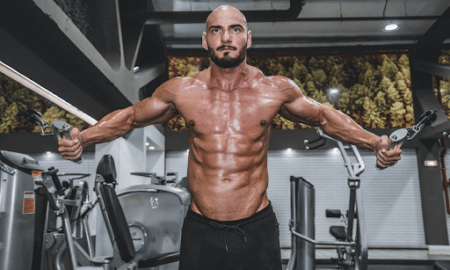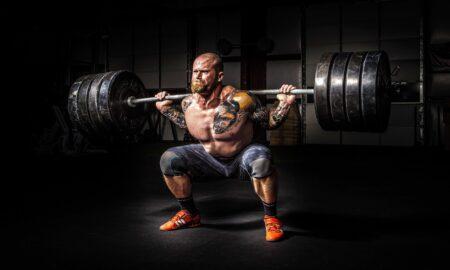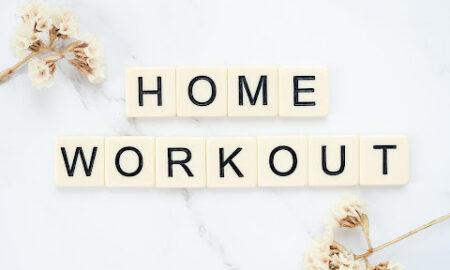I’m over 40, and your greatest bodybuilding-related goal is also mine. It’s not to build or maintain a 17-inch arm or even a 16-inch arm, not to build or maintain a big bench press and not to build or maintain a six-pack. It may include those targets, but the greatest goal is much bigger. It’s not what you can do over the next year or two or three but that you’re still training in 30 or even 40 years.
The greatest bodybuilding-related goal is training longevity—to train for the rest of your life. Do your utmost to stay at your best if you’ve already trained well for a long time, or do your utmost to work toward your best if you’re new to bodybuilding. Strive to build more muscle and strength, but never lose sight of the bigger picture.
The greatest benefit of bodybuilding isn’t aesthetics but health. Done correctly, bodybuilding can add life to your years and perhaps years to your life, but you have to do it for the rest of your life to get both benefits.
Done correctly, the strength-training aspect of bodybuilding is the most productive form of exercise. Here’s why: It builds strength, develops muscle, strengthens bones, improves overall fitness, increases calorie consumption, helps control bodyfat, improves posture, slows the effects of aging, increases resistance to injury and transforms physical appearance. No other single form of exercise can produce all those benefits. That’s why strength training is the most important element of an exercise program. Supplement it with cardio and stretching for a complete regimen.
Sensible training for us over-40s is similar to sensible training for bodybuilders in their 20s, but there are some differences if you’re to achieve training longevity.
1) Charles Smith was a major figure working on Joe Weider’s magazines in the 1950s and one of the last links to the pioneers of bodybuilding. Here’s what Charles told me shortly before his death in 1991: “You never know how important good health is until you no longer have it.” Think about that—dwell on it. Health is great wealth and should be revered and preserved. Avoid all harmful habits, activities and environments. Look after yourself! That applies to people of all ages—and you should never take liberties with your health even if you’re young—but it applies with ever-increasing magnitude as you age.
2) Training safety is the number-one priority for middle-aged bodybuilders—whether beginner or experienced. Experienced bodybuilders know how to train safely; otherwise they wouldn’t be experienced bodybuilders, although some of them do things that would injure most other bodybuilders. Beginners, though, usually don’t know what they are doing, and just one slip can lead to an injury. Middle-aged bodybuilders must be even more careful to choose exercises that are safe for them and use correct technique. Never cheat. If you can’t complete a rep in correct technique, end the set.
3) Youngsters, because of their age and because they have more training years ahead of them, have a greater potential for mass than much older people do. So youngsters can have higher expectations. What matters most, regardless of age, is doing the best you can one day at a time. Do that week after week, month after month and year after year, and the results will take care of themselves relative to your genetic potential and dedication.
It may be easier to be impressive in middle age than as a youngster—if you know what you’re doing. Imagine 175 pounds and a 31-inch waist at 5’9” and age 50. That’s nothing compared to a professional bodybuilder but plenty compared to the average 50-year-old. If you can maintain that or very close to it when you’re 60, you’ll be a true superman.
4) Older people usually need more recovery time and have less exercise tolerance than younger people unless the older people have exercised for years and have developed conditioning that’s better than the average younger person’s. So if you feel you need an extra day between workouts or a more abbreviated training routine, that’s normal.
5) Younger people usually need more calories than older people. Teenagers may be able to eat a great deal without getting fat, but 30 years later, that same calorie intake may be too much. Eat as many nutritious calories as possible without getting fat. Eliminate junk food. Eat healthful food only, and don’t overeat. Fast weight loss is always a bad idea. Slow and steady is the way to go—by way of a permanent lifestyle. Losing fat only and keeping it lost are the priorities.
6) Youngsters don’t have to do cardio, but middle-aged bodybuilders should definitely include it twice a week for heart health. First get the approval of your doctor—make sure demanding cardio work is safe for you. Even then, start out at low intensity and gradually build up the effort. Take about two months before working your heart hard.
You’ll need to go to at least 85 percent of your age-adjusted maximum heart rate. If you’re, say, 50, that means your age-adjusted maximum heart rate is 220 minus 50, or 170, and 85 percent of that is 145. Once you’re in good condition, or if you’re already in good condition because you’ve been doing cardio work for many years, 145 beats per minute won’t be enough to give your heart a good workout. At 49, I go to about 165 beats per minute.
7) Youngsters don’t have to stretch, though it’s recommended for them too. Middle-aged bodybuilders should definitely stretch two or three times a week—preferably after their weight workouts. Maintaining a supple body is imperative for keeping a youthful body, but it’s easy to get injured while stretching, so be careful. Do not get injured. Never do any ballistic stretching. Instead, do several progressive reps of each stretch, each one taking you a bit farther than the previous one. Hold each rep for at least 20 seconds.
Train correctly at every workout. Eat correctly at every meal. Sleep well every night. And do it all relentlessly. That way you’ll make good, steady bodybuilding progress. Train for health and physique, not just physique.
—Stuart McRobert
www.Hardgainer.com
Editor’s note: Stuart McRobert’s first byline in IRON MAN appeared in 1981. He’s the author of the new 638-page opus on bodybuilding Build Muscle, Lose Fat, Look Great, available from Home Gym Warehouse, (800) 447-0008 or www.Home-Gym.com.




















You must be logged in to post a comment Login